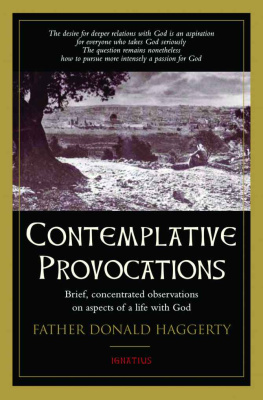Mark E. Thibodeaux - Armchair Mystic: How Contemplative Prayer Can Lead You Closer to God
Here you can read online Mark E. Thibodeaux - Armchair Mystic: How Contemplative Prayer Can Lead You Closer to God full text of the book (entire story) in english for free. Download pdf and epub, get meaning, cover and reviews about this ebook. year: 2019, publisher: Franciscan Media, genre: Religion. Description of the work, (preface) as well as reviews are available. Best literature library LitArk.com created for fans of good reading and offers a wide selection of genres:
Romance novel
Science fiction
Adventure
Detective
Science
History
Home and family
Prose
Art
Politics
Computer
Non-fiction
Religion
Business
Children
Humor
Choose a favorite category and find really read worthwhile books. Enjoy immersion in the world of imagination, feel the emotions of the characters or learn something new for yourself, make an fascinating discovery.
- Book:Armchair Mystic: How Contemplative Prayer Can Lead You Closer to God
- Author:
- Publisher:Franciscan Media
- Genre:
- Year:2019
- Rating:4 / 5
- Favourites:Add to favourites
- Your mark:
- 80
- 1
- 2
- 3
- 4
- 5
Armchair Mystic: How Contemplative Prayer Can Lead You Closer to God: summary, description and annotation
We offer to read an annotation, description, summary or preface (depends on what the author of the book "Armchair Mystic: How Contemplative Prayer Can Lead You Closer to God" wrote himself). If you haven't found the necessary information about the book — write in the comments, we will try to find it.
This user-friendly book blends theory and practice, gently and concretely taking the reader through the first steps of contemplative prayer.
Armchair Mystic: How Contemplative Prayer Can Lead You Closer to God — read online for free the complete book (whole text) full work
Below is the text of the book, divided by pages. System saving the place of the last page read, allows you to conveniently read the book "Armchair Mystic: How Contemplative Prayer Can Lead You Closer to God" online for free, without having to search again every time where you left off. Put a bookmark, and you can go to the page where you finished reading at any time.
Font size:
Interval:
Bookmark:
ARMCHAIR MYSTIC
Armchair Mystic
How Contemplative Prayer
Will Bring You Closer to God
MARK E. THIBODEAUX, SJ

franciscan
media
Cincinnati, Ohio
Nihil Obstat:
Rev. Lawrence Landini, O.F.M.
Rev. John Armstrong, S.J.
Rev. David L. Zink
Imprimi Potest:
Rev. Fred Link, O.F.M.
Provincial
Rev. James P. Bradley, S.J.
Provincial
Imprimatur:
Most Rev. Carl K. Moeddel, V.G.
Archdiocese of Cincinnati
March 15, 2001
Unless otherwise indicated, Scripture citations are taken from the New Revised Standard Version Bible, copyright 1989 by the Division of Christian Education of the National Council of Churches of Christ in the U.S.A. and used by permission.
Grateful acknowledgment is made to the following for permission to reprint previously published material:
From New Seeds of Contemplation by Thomas Merton, copyright 1961 by The Abbey of Gethsemani, Inc. Reprinted by permission of New Directions Publishing Corp.
From I Believe in the Sun by Carey Landry, copyright 1973, 1975, 1978, by Carey Landry and North American Liturgy Resources.
Reprinted by permission of Oregon Catholic Press.
Cover and book design by Mark Sullivan
ISBN 978-1-63253-288-6
Copyright 2001, 2019 Mark E. Thibodeaux, SJ. All rights reserved.
Published by Franciscan Media
28 W. Liberty St.
Cincinnati, OH 45202
www.FranciscanMedia.org
To Mom and Dad,
who first taught me how to pray
index of exercises
Exercise A
Becoming Aware of My Body
Exercise B
The Mantra
Exercise C
Chanting
Exercise D
Reflecting on the Lords Prayer
Exercise E
When Im Upset
Exercise F
Linking the Many Mes
Exercise G
Linking My Prayer to Others
Exercise H
Making a Joyful Noise
Exercise I
The Rosary as Mantra
Exercise J
Drawing God and Me
Exercise K
Meeting a Younger Me
Exercise L
The J.O.Y. Meditation
Exercise M
Where Am I in the Story?
Exercise N
Where Is the Story in My Life?
Exercise O
The Chair
Exercise P
Rerun of the Day
Exercise Q
Deathbed
Exercise R
Offering Up Pesky Distractions
Exercise S
The Savoys Porch
Exercise T
Worthy People Distractions
Exercise U
Worthy Future Distractions
Exercise V
At the Side of a Sleeping Friend
preface to the new edition
They say you never get over your first love....
I began writing Armchair Mystic around 1999, which is to say that this work is now twenty years old. My first-born child is all grown up! Tens of thousands of people have read it, and it has been one of the blessings of my life to accompany them through the fits and starts, the ebbs and flows of their contemplative prayer lives. I have been delighted and enriched by the conversations that have flowed from it.
In a way, one could say that Armchair Mystic began even earlier. In the early 1990s, as a seminarian teaching theology to sophomores at Jesuit College Preparatory in Dallas, it struck me that while the school did a great job of teaching about God, it did little to teach our students how to be with Godhow to pray and be in a relationship with God. So, with the blessing of my administrators, I added a new dimension to my theology class. From time to time, after calling roll, I would read out the names of half the class and say the words that every adolescent boy loves to hear, Gentlemen, you are free to go. I would then take the other half into our small chapel to learn about and to practice contemplative prayer. The next day, I would do the same with the other half.
There were good days and bad days. I remember one particularly discouraging period wherein one of my would-be monks loudly passed gas and my other young monks could not regain composure for the rest of the period. I remember looking to the tabernacle and sarcastically saying to Jesus in my mind, You know, if you cared to stop in and visit every now and then, I would really appreciate it.
Another struggle I had was finding good reading materials that were basic enough for teenagers to understand but not so simplistic as to bore them or insult their intelligence. I never found just the right book, so I resorted to writing handouts, using explanations, stories, and metaphors from my own experience of contemplative prayer. I had no notion these handouts would later become the foundation of a book.
After a few years of teaching, I moved on to the final phase of my pre-ordination formation: theology graduate school. I took a wonderful class called Reading about Contemplative Prayer. I enjoyed it so much that I pitched an idea to my professors for an independent study that I called, Writing about Contemplative Prayer. I would write a bit about one topic or another in contemplative prayer. I would then copy and distribute my writing to a diverse group of readers and would subsequently interview them about their experience after trying out what the written piece had instructed. I would then return to the work and reshape it based on what I had learned from my experimenters in the field.
I smile when I recall some of the memories of bumbling through the writing of this first book:
The book was originally six long, ponderous chapters. My readers said, Its good, but each chapter is a bit heavya bit too much to chew on in one sitting. Thats when I had the epiphany of breaking it up into lots of smaller chapters. The problem was that it required shattering the chapters into small bits. How could I then put it back together again? I remember writing on scraps of paper torn out of my legal pad, the thesis statement of each potential chapter and laying them out on the floor of my bedroom. Until I got the arrangement just right, I sat there moving these pieces around in one order and then another as though I were arranging Scrabble tiles, searching for the elusive seven-letter word.
After spending weeks writing in my bedroom in Dallas, I began climbing the walls. So, using vacation money my superior had given me, I drove to Oklahoma City and checked into a Motel 6 for three or four days. I stopped looking at the clock and let the writing dictate when I would eat, sleep or write. My days became surreal, sometimes writing in the dead of night, sometimes sleeping deeply at midday. This crazed schedule worked brilliantly: I did some of my best writing in that cheap motel room.
Much later, months past my writing deadlines, I spent several days and nights alone in a snow-covered cabin in Massachusetts, putting the very last touches on the manuscript. On my last evening, I was sure that it was finally finished whenjust before turning off my laptop and going to bed, I noticed a hole in one chapter whereby some yet undiscovered story should go. A while later, I knew just the right story: the one in which I sit on my dads lap, homesick for our previous home, found at the beginning of Chapter Five. You would think Id be happy about conjuring up this story, but I was furious! I knew that adding even a short and simple story would mean weeks of more of tweaking, editing and revising. And I was sick of writing and ready to be done with it all! I went to bed that night angry and convinced that I could leave the story out. But the manuscript, like a cranky child wanting to be fed, kept crying out to me. Now that the story was planted in my brain, I would get no peace until I wrote it. So, the next morning I rolled my sleeves back up and got to work again. Reading that story today makes me proud and happy that I did not finish the manuscript until the manuscript itself would tell me when it was finally ready.
Next pageFont size:
Interval:
Bookmark:
Similar books «Armchair Mystic: How Contemplative Prayer Can Lead You Closer to God»
Look at similar books to Armchair Mystic: How Contemplative Prayer Can Lead You Closer to God. We have selected literature similar in name and meaning in the hope of providing readers with more options to find new, interesting, not yet read works.
Discussion, reviews of the book Armchair Mystic: How Contemplative Prayer Can Lead You Closer to God and just readers' own opinions. Leave your comments, write what you think about the work, its meaning or the main characters. Specify what exactly you liked and what you didn't like, and why you think so.










